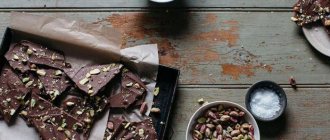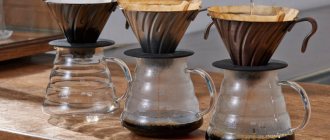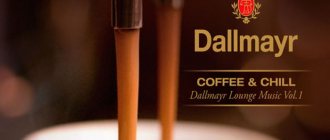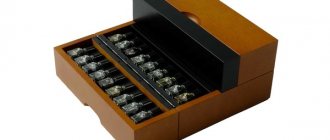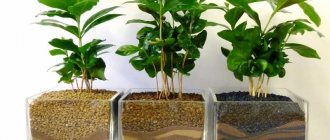A red cup with white Nescafe letters in the hands of an astronaut, an alien, and even in the paws of a polar bear at the North Pole - all kinds of advertising stories have been shot by the owners of the instant coffee brand. And the effect has been achieved: the first brand that is named in response to a question about an instant drink is “Nescafe”. Trendy images of coffee stories - a girl waking up to the aroma of coffee, an optimistic hockey player for whom “everything starts with Nescafe”, a father and son on a morning fishing trip with the same red branded mugs, all of them are about Nescafe instant coffee.
In 2020, the brand turned 80 years old. 4,500 cups of Gold, Classic, Sensa, Espresso and other types of Nescafe are drunk every second in the world - from glass and tin cans, from vacuum bags and 3-in-1 stickers. Over 80 years, the brand has evolved from an ordinary can to a full range , including coffee systems. Today there are active sales in 180 countries around the world, but there are only 197 of them. But the company is not going to stop there.
History of the brand
The brand name was formed by combining the words Nestle and Cafe, this happened in 1938. Nine years earlier, the Swiss company Nestle, led by Louis Dapplet, specializing in the production of baby food and condensed milk, made an offer they could not refuse. A large amount of coffee beans was stored in the Brazilian warehouses of the bank servicing the company. The crisis did not allow selling all stocks; a new harvest was on the way, and the remains of the old one could become moldy.
A large amount of leftover beans in the warehouse became the beginning of the production of a new type of coffee
In such a hopeless situation, the bank offered the then small company to expand its production range and, with the help of its chemists, create a product that would be stored for a long time and could be immediately consumed in dissolved form.
For these difficult tasks, the Swiss chemist Max Morgenthaler was invited to the company. He spent four years searching for the perfect instant coffee. Initial results were not ideal and had problems with solubility and lack of proper taste. Sugar and milk powder only made the situation worse.
It was only in 1937 that Max showed the finished product to the company's management, and in the spring of 1938 the first instant coffee under the Nescafe brand was presented to Swiss customers. Within a year the coffee was sold in Britain and the USA, and after another year it could be found in 30 countries around the world.
Instant coffee was first produced under the Nescafe brand.
After World War II, the new product began to take over the whole world. The company began producing not only instant coffee, but also related products: foaming blenders, coffee makers and coffee machines.
How did Nescafe come about?
Nescafe is the brainchild of the famous manufacturer of various food products, Nestle. This brand appeared in the late thirties of the last century and in a couple of decades won worldwide love. The reason for starting the production of instant coffee was the appeal of Brazilian entrepreneurs to the Nestle company. They asked for help in selling coffee beans.
At that time, there was already instant coffee on the market, but it was not popular due to its low taste. The company's specialists have been working for eight years to improve production technology and improve the taste of instant coffee products. Thanks to this, the first instant Nescafe appeared. It was immediately exported from Switzerland to France, Great Britain and the USA.
According to the manufacturer, then the composition of instant coffee included only coffee beans. This was achieved by inventing a technology that did not use a carbohydrate base. A little later, already in 1960, they began to flavor coffee and learned to produce granulated and freeze-dried products.
Raw materials and production process
The most common coffee varieties are Arabica Robusta. Robusta beans are distinguished by a high caffeine content, which gives the coffee strength and a pleasant, rich aroma and bitterness. Arabica, on the contrary, is characterized by a small amount of caffeine and contains more essential oils. It has a mild taste and a sweetish aftertaste with sourness.
Coffee beans are carefully collected by hand
The process of collecting coffee beans has not changed over time. The grains are still collected by hand. They are then cleared of their outer shells. Next, usually by hand, the best quality grains are selected to go into production. The main plantations are located in Brazil, Indonesia, Peru, Colombia, Vietnam, i.e. in the coffee belt countries.
In coffee factories, instant coffee is produced mainly in two ways. The first one is more budget-friendly and is called agglomeration. The resulting beans are ground in large coffee grinders, the resulting powder is diluted with water, resulting in an extract that is exposed to hot air, the water from the solution dissolves and soluble coffee granules remain.
Grinding of grains is done in large machines
The second method is more modern - freeze drying. But its costs are significantly higher than those of agglomeration. The method involves freezing the coffee extract and then using hot air and vacuum to dehydrate the extract. The coffee breaks into small pieces that resemble broken ice. This type of preparation preserves the taste, aroma and beneficial properties of coffee as much as possible.
The company has opened 447 factories in 86 countries, employing more than 300 thousand people.
Nescafe Green Blend
Nescafe Green Blend is not only a delicious and invigorating coffee, but also an elixir of female youth and beauty. This effect is due to the unusual combination of green, unroasted and roasted coffee beans. Thanks to this, the drink contains the same amount of antioxidants as green tea, but they are absorbed much better. The taste of this coffee is quite unusual, very delicate and fresh. You can buy it in a 100 gram glass jar, 70 and 150 gram soft packaging.
Coffee rulers
There are a large number of Nescafe coffee lines around the world. Each of them has its own unique qualities, so everyone can find their favorite taste. Each region has its own individual set of product lines and types. There are 4 product lines in Russia: Gold, Classic, Sensa and 3 in 1.
NESCAFE Gold (Gold)
Made from Arabica and Robusta beans. It is one of the oldest types of coffee from the brand; it began to be produced back in 1965. The raw materials are characterized by ultra-fine grinding, which allows the taste and aroma to develop more strongly. It is considered a “premium” product, although it is not the most expensive. It has a pleasant caramel aroma during cooking. Due to its light roasting, it has a mild taste.
Nescafe Gold is made from a mixture of Arabica and Robusta.
This type of coffee is perfect for making Tiramisu cocktail. To prepare it you will need 90 ml of freshly brewed Nescafe Gold coffee, 400 ml of high fat cream, 40 ml each of Amaretto and Tiramisu syrup. Beat the syrups with cream and pour the resulting cream onto the coffee base. Decorate with cocoa if desired.
Nescafe Gold Barista (Gold Barista)
The granules are obtained by sublimation, which is why the cost is quite high. The beans are perfectly roasted and the finest Arabica beans are added to the finished product. The best grains are selected for the product and undergo the strictest selection. Strong coffee with a rich aroma.
Nescafe Gold Barista is made from ground Arabica coffee.
For those who like to experiment, Barakito coffee is perfect! To prepare a couple of cups of coffee you will need: 60 ml condensed milk, 30 ml coffee syrup, 120 ml Gold Barista coffee, 30 ml milk foam. Layer condensed milk and syrup, coffee and foam into cups. To serve, garnish with lemon zest.
Nescafe Gold Crema (Gold Crema)
The character of this drink is already reflected in the name - it has a soft, velvety foam that will allow you to fully enjoy the taste and aroma, and underneath it is bright, strong coffee. Belongs to the middle price category.
Nescafe Gold Crema forms a lush foam when brewed
What can you prepare for coffee with foam? Latte of course! It is necessary to brew 50 ml of coffee until foam forms, if desired, add 2 teaspoons of sugar for sweetness. Next, heat the milk to 60 degrees Celsius and beat half of it with a blender or mixer until foam appears. Pour the coffee into a cup of milk and carefully place the resulting foam on top.
Nescafe Gold Cappuccino (Gold Cappuccino)
One of the oldest names for coffee, as it began to be produced under the Nestle brand, the formula by which this coffee is produced now dates back to 1987. There are several subtypes of the drink on the market: with caramel or mild flavor, strong, classic and in 3-in-1 sticks. Many coffee connoisseurs like it for its simplicity, pure taste and voluminous head.
Aromatic coffee with milk foam, available in several packaging options
There are a lot of options for making cappuccino. Cappuccino with liqueur, ice cream, vanilla, cognac, and chocolate became widespread. For cappuccino with liqueur, you will need to brew 225 ml of coffee, 50 ml of heated milk, whip up the foam. Pour coffee liqueur and 50 ml of milk into a preheated ceramic mug and decorate everything with foam.
NESCAFE Classic
It can safely be called the most popular coffee of the Nescafe brand; it subtly captures the line between affordable price and good quality. Arabica and Robusta beans for coffee are grown on the best coffee plantations in Brazil. It is distinguished by a simple, but still recognizable bitter taste with a rich aroma. Perfect for many coffee drinks and a great way to invigorate you in the morning.
Classic is the basic taste in the Nescafe brand line
Nescafe Classic Crema
Combines the original taste and aroma of classic Nescafe and the tenderness and airiness of Gold Crema. For which you have to pay an above average price. Ready to drink on its own or in cocktails, ideally combined with sweets such as marshmallows or marshmallows.
Nescafe Classic Crema can be drunk with any sweet dessert
NESCAFE Sensa
Not so widespread and popular on the Russian market, unlike its counterparts. A representative of the premium segment, produced in the United Kingdom from Arabica beans. The most expensive of the brand representatives in Russia. Positioned as a drink straight from the best caffeine in the world. It has excellent foam and bright taste. You can choose Americano or Espresso.
Premium coffee, which is available in 2 varieties
NESCAFE 3 in 1
A quick option to boost your energy and quench your thirst at a low price. You can always take it with you on the road, since 3 in 1 is a ready-made combination of coffee, cream and sugar. Available in caramel flavor, in the classic version, cappuccino, Mild - the taste of delicate chocolate, and Strong - for those who like something stronger.
3 in 1 - an affordable coffee option sold in sticks
Nescafe Gold
Nescafe Gold is a premium aromatic coffee. As soon as you pour boiling water over it, the smell will be felt throughout the apartment. An exquisite blend of Arabica and Robusta beans, their gentle roasting provides a soft taste and light caramel aroma. On the market it is presented in glass jars of 200, 100 and 50 grams, as well as soft bags of 150 and 75 grams.
Reviews of Nescafe coffee
Customer reviews vary, because everyone has their own individual taste, but almost everyone does not remain indifferent to the already classic tastes of Nescafe coffee. Therefore, most people prefer this brand. Some people buy coffee because of the relatively low price, while others note that the manufacturer keeps the quality of taste high.
Some consumers do not find the coffee strong enough; some prefer to add milk and cream. But everyone agrees that the drink has a pleasant aroma. Most of the criticism is directed towards Nescafe 3 in 1, since it has practically nothing in common with real coffee, the taste and quality leave much to be desired.
Nescafe is the favorite drink of millions of people around the world.
Advantages and disadvantages of instant coffee
The only advantage of instant, freeze-dried and granulated coffee is the speed and ease of preparation. As long as your health is fine, which usually happens in youth. After several years of using chemicals, the liver stops performing its functions, and a person begins to feel unwell from questionable foods or drinks.
It makes no sense to consider the disadvantages of coffee if it is not one. Recommendation for those who love instant coffee: at the first sign of discomfort after drinking the powder, you need to switch to natural beans that you can see and touch with your hands. Even a ground packet does not provide as much confidence as an espresso made from freshly ground beans.
Counterfeits and how to spot them
Nescafe coffee is rarely counterfeited in large quantities. However, there are large quantities of counterfeit goods. So, from 2005 to 2006, a gang from St. Petersburg produced counterfeit goods and distributed them throughout major Russian cities. Production volumes were comparable to industrial production.
To distinguish the original from a fake, just look carefully at the packaging. It is necessary to pay attention to the price of coffee - a low price is a reason for caution.
Low-priced coffee may contain chicory or malt. The packaging will not be of the same quality and may lose its seal.
The markings on counterfeit cans are already on the cans, not glued on. It is extremely important to find the date, country of origin, and barcode. The first 3 digits of the barcode must match the country of origin code. And, of course, the taste, aroma and type of coffee granules will differ.
Also read about the origins of Dafidoff, Jacobs and Mehmet Efendi coffee brands.
Nescafe Espresso
Nescafe Espresso is selected Arabica beans, roasted to a dark color. This coffee is very similar to Italian, thanks to its strong, rich taste and delicate foam. The consistency of all grains is correct thanks to the latest technology based on the spraying of a liquid base. This type is most similar to freshly brewed coffee; it also goes well with cream and milk. Available in soft packages of 70 and 500 grams and in glass jars of 100 and 200 grams.
Product packaging methods
Nescafe is packaged in various containers that have the necessary properties and meet all the requirements. The main condition is the tightness of the packaging, which will preserve all the properties of the raw materials for a long time and allow the consumer to enjoy the real natural taste.
The Nescafe Gold product line is created for connoisseurs of a strong drink with a rich aroma and a slight bitter-sweet aftertaste.
So, packaging is distinguished as follows:
- Nescafe coffee bags are convenient for use in the office when you need to cheer up without being distracted from your workplace.
- Glass jars made from thick, clear glass that allows you to see the ingredients of the product. Most often they are purchased for home use.
- Tin cans help preserve aroma, taste and color for a long time.
- Coffee capsules for use in coffee machines.
- Soft packaging that does not require much storage space.
Often, along with the purchase of this brand of coffee, you can receive a gift, for example, a teaspoon, a jar for storing dry mixtures, a glass or something else. These pleasant little things often create a great mood among buyers.
Packaging 250 g
There is a packaged version with a volume of 250 g, suitable for a large family, and you can save money. The grains are selected, roasted to medium level, mixed into a special blend - a combination of several varieties, as a result of which it is possible to achieve a unique taste.
The developed packaging will prevent damage to the product, which is subject to constant negative influence from the outside. Once opened, the shelf life is extended thanks to the zipper, approximately 18 months.
Strength rating: 3 out of 5.
The contents are 125 cups, which is enough to last for a long time. You will be able to enjoy the wonderful taste of coffee throughout the entire time.
Consumer Reviews
Vera, 24 years old, Moscow: Regular instant coffee. The presence of ground is not felt either in taste, aroma, or even visually. It seems bitter at first, but without unpleasant or harsh notes. Strong. It's too expensive for instant.
Elena, 19 years old, Saratov: Good coffee, but not strong enough. Instead of the recommended two spoons per cup, you have to put three. The taste is pleasant, without sourness.
Irina, 52 years old, Krasnodar: The taste and aroma are pleasant, but greatly depend on the batch. If you're unlucky, it's easy to buy burnt coffee, but last time everything was great!
Barista drink option
Barista consists of two types of coffee - granulated and ground, which ultimately brings a successful combination that gives a unique sensation. The technology helps preserve the rich taste and aroma inside the granule, and these qualities are observed when instantly dissolved in a cup.
Chibo coffee and reviews about it
The drink can be drunk either without additives or when combined with cream, milk and ice cream. Good news for those with a sweet tooth, because coffee will be an excellent addition to dessert, in particular, pleasure appears when combined with sweet vanilla pastries.
To avoid troubles such as moisture and foul odors that spoil the natural characteristics, jars with hermetically sealed lids are specially designed to hold the dry coffee mixture. You can enjoy it at home, at work, or take it on a trip.
There is no need to brew, since the drink is obtained by pouring boiling water, after which the natural qualities are not lost. It gives vigor in the morning and increases performance.
The calorie content of this option, like the rest of the series, is 63 Kcal per 100 g, of which proteins – 7.0 g, fats – 0.2, carbohydrates – 9.0.
When the container is opened, you must consume the contents before the end of 70 days.
Capacity is enough for more than 37 cups
The strength is rated 4 out of 5 points.
Store in a cool dry place.
The warranty period is about 12-16 months.
